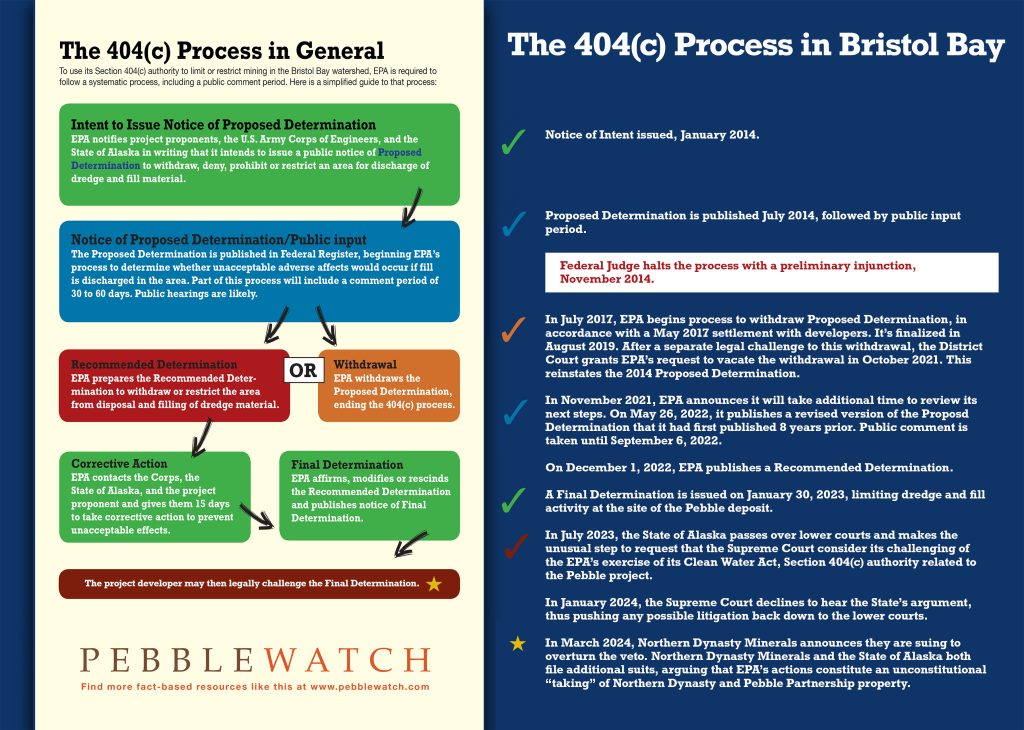EPA began 404(c) process to protect Bristol Bay aquatic resources ten years ago
Ten years ago, the U.S. Environmental Protection Agency announced its intent to initiate a process under the Clean Water Act Section 404(c) to restrict discharge of dredged or fill material associated with mining activity at the Pebble deposit. The 404(c) process gives the EPA “veto authority” on projects that are considered to have unacceptable adverse impacts to aquatic resources.
After delays, lawsuits, revisions, and some of the highest public comment numbers in EPA history, the process culminated in January 2023 with a Final Determination even more restrictive than what the EPA had proposed in 2014.
EPA had determined that the mine project as described in Pebble Limited Partnership’s 2020 Mine Plan would cause permanent loss of approximately 8.5 miles of anadromous fish streams, 91 miles of streams that support anadromous fish streams, and 2,108 acres of wetlands and other waters that support anadromous fish streams.
The Final Determination sought to prevent these adverse effects by “prohibiting and restricting the discharge of dredged or fill materials associated with developing the Pebble deposit in certain areas of the Bristol Bay watershed.” It was just the 14th time that the agency had used its authority in this manner in the fifty-year history of the Clean Water Act.
Although EPA’s process is complete, Northern Dynasty Minerals (NDM, the owner of Pebble Limited Partnership), and the State of Alaska both filed suit against the agency in March 2024. NDM seeks to undo its action, contending that the process was flawed. It has also filed a case arguing that the EPA’s actions constitute “an unconstitutional taking” of Northern Dynasty and Pebble Partnership property. The State of Alaska filed a similar case.
